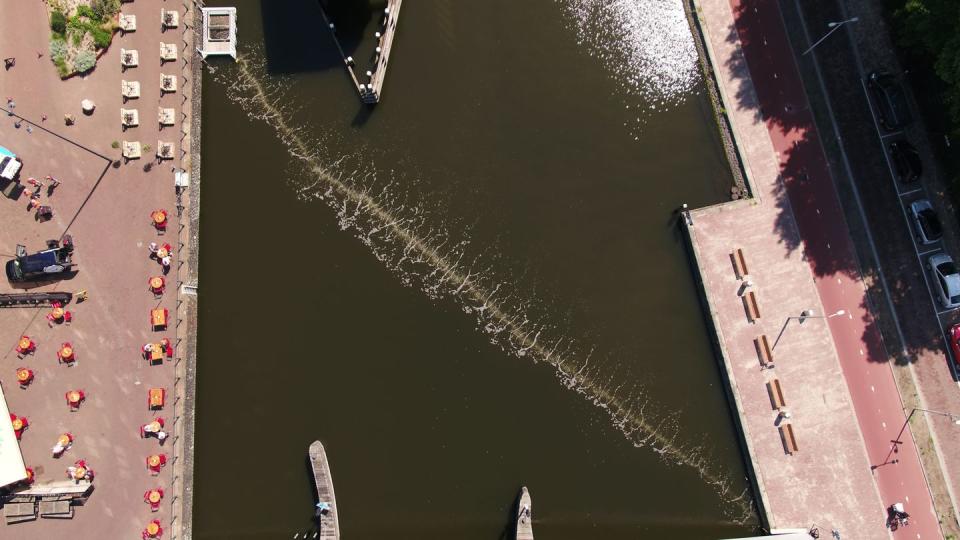How One Earthshot Prize Finalist is Using Bubbles to Stop Plastic Pollution
When Philip Ehrhorn was a student in Berlin, he visited a waste water treatment center and noticed how bubbles encouraged the waste to collect in one corner. Inspired by his passion for the ocean, he began pondering this as a way to redirect plastic pollution away from its route to the sea. He was, it turned out, not the only person to have this idea. After the "randomness of the internet" led him to discover that three women in the Netherlands were already collaborating on the concept, the four joined forces to eventually launch Dutch-based startup The Great Bubble Barrier.
The innovation is one of 15 finalists which will be launched into the spotlight this week as Prince William and Kate host the Earthshot Prize awards in Boston. Designed to find and back innovative solutions to help repair the planet, the awards aim to harness both a sense of urgency and optimism about what can be done to reverse the damage being done to the natural world.
“I always took frustration as motivation to take action. And I was very frustrated with the state of our oceans and how we as humans were treating it,” Philip, who dives and surfs, tells T&C. “So I always had that motivation—that whatever I’m doing I want to dedicate my work towards somehow benefitting our oceans.” For his co-founders Francis Zoet, Anne Marieke Eveleens, and Saskia Studer, inspiration for The Great Bubble Barrier came at an even more unexpected moment. “The idea quite literally came from the bubbles in the beer glass when they were discussing this,” Philip says.

Quite simply, the innovation intercepts plastic in rivers and canals before it reaches the sea. By pumping air through a perforated tube placed on the riverbed, a curtain of bubbles is created which directs plastic to the surface and towards a waste collection system. Since launching the idea in 2017, The Great Bubble Barrier has won backing and prizes to develop the technology. The first barrier was implemented in a canal in Amsterdam in November 2019 and several have now been installed in the Netherlands with plans for others in Germany and Portugal. The technology has been proven to catch an average of 86% of plastic waste.
“Obviously now we are at the point that people are recognizing the success of the solution and what it can do,” Philip says. “But it has not always been that way. There were more than enough doubters. In the beginning that was a big a big hurdle. We are quite stubborn in that sense…once we had identified what it can do we wouldn’t let anyone tell us what it cannot do.”
One of the benefits of the solution is not just that it prevents the plastic from reaching the ocean but it allows people to see the scale of the problem through what is collected. “The bigger value also lies in that we can make visible what’s actually in our rivers,” says Philip. “We can show people what otherwise would have ended in our oceans and we can use that to raise awareness.”
Philip describes being an Earthshot Prize finalists as their “biggest platform so far.” “We have already reached a lot of interest internationally but that was also more from a niche group that was already looking towards this problem,” he says. “This is something globally that affects all of us…And that we don’t just have to be only frustrated about it. But we need a certain optimism… I’m optimistic but I’m of course realistic. I know it’s going to take some time and it requires collaboration and a certain scale.”
You Might Also Like


